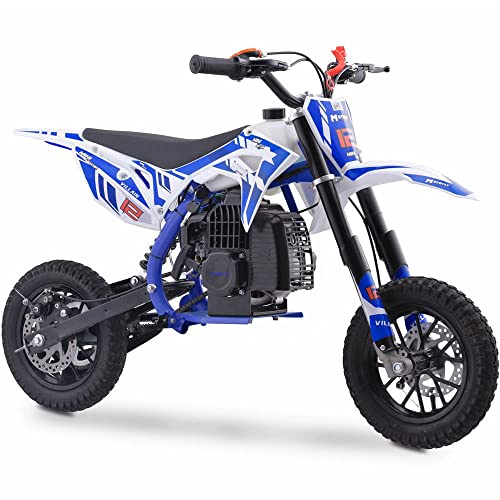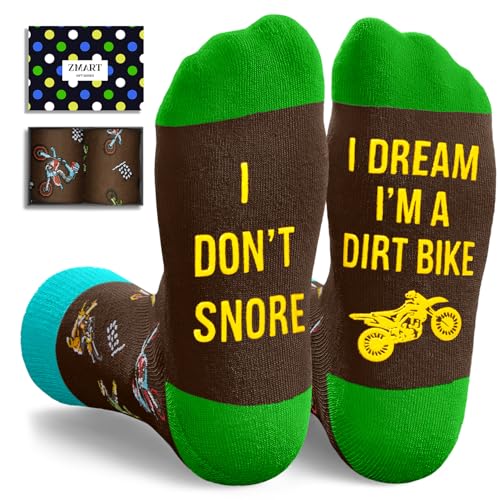Dirt Bike Size Guide Tool
Looking for the perfect fit? Check out these Best-Selling Dirt Bike.

Dirt Bike Size Guide - Find the Perfect Bike for Your Ride
Dirt biking is an exhilarating sport that takes you off the beaten path and into some of the most challenging terrains imaginable. Whether you're a seasoned rider or a beginner, finding the right size dirt bike is crucial for both safety and enjoyment. The wrong size bike can lead to difficulty controlling the bike, discomfort, or worse, injury. But how do you know which size is best for you?
We’ll break down everything you need to know about choosing the right dirt bike size. From factors like age, height, and riding skill, to the different types of dirt bikes available, you’ll be equipped with all the information you need to make an informed decision.
Why is Dirt Bike Size Important?
Choosing the right dirt bike size is essential for several reasons:
- Control and Comfort: If the bike is too big, you may struggle to control it. If it's too small, you may feel cramped and uncomfortable, which can detract from the experience.
- Safety: Riding a bike that’s too large or too small can be dangerous, especially for beginners. The right size ensures you have the proper balance and control, reducing the risk of accidents.
- Performance: A bike that fits well allows you to perform at your best, whether you’re racing or just riding for fun.
Factors to Consider When Choosing the Right Dirt Bike Size
1. Rider’s Age
Younger riders will typically need smaller bikes because they have shorter inseams and less strength. Dirt bikes come in various sizes to accommodate different age groups, ranging from mini-bikes for young children to full-sized bikes for adults.
2. Rider’s Height
Height plays a big role in determining the right bike size. Taller riders need bikes with higher seat heights for proper legroom, while shorter riders will need a bike with a lower seat height to ensure they can touch the ground with their feet.
3. Rider’s Skill Level
Beginners will need a smaller, more manageable bike to learn on, while experienced riders can handle larger, more powerful bikes. As you progress in your riding skills, you may want to upgrade to a more advanced bike that offers more power and control.
4. Riding Style
Different types of dirt bikes are designed for different riding styles, including motocross, trail riding, and enduro racing. The type of bike you choose will depend on the kind of terrain and riding you plan to do.
5. Engine Size
Dirt bikes come in various engine sizes, typically measured in cubic centimeters (cc). Smaller engine sizes (50cc-125cc) are usually suited for younger riders or beginners, while larger engine sizes (250cc and up) are designed for more experienced riders.
Types of Dirt Bikes
Before jumping into the size guide, it’s important to understand the types of dirt bikes available. The right type of bike for you will depend on your experience level and the kind of riding you want to do.
1. Mini Dirt Bikes
Mini bikes are designed for younger riders, typically between the ages of 3 and 12. These bikes are lightweight, easy to handle, and come with smaller engines, usually between 50cc and 110cc. They are perfect for beginners or for kids who want to start learning how to ride.
2. Youth Dirt Bikes
Youth dirt bikes are made for older kids and teenagers. These bikes have larger engines (110cc to 150cc) and higher seat heights than mini bikes, but they’re still manageable for younger riders. They provide a great transition for riders who have outgrown mini bikes but aren’t ready for adult-sized bikes.
3. Full-Sized Dirt Bikes
Full-sized bikes are designed for adults or experienced riders. These bikes come with engine sizes ranging from 125cc to 450cc. Full-sized dirt bikes are suitable for all types of off-road riding, including motocross, trail riding, and enduro.
4. Enduro and Dual-Sport Bikes
Enduro and dual-sport bikes are designed for long-distance off-road riding. These bikes are versatile, able to handle both rough trails and paved roads. They tend to have larger engines (250cc to 450cc) and higher suspension for tough terrain.
Dirt Bike Size Chart
The following table is a comprehensive dirt bike size guide based on age, height, and skill level. It will help you find the perfect dirt bike size for your needs.
| Rider Age | Rider Height | Recommended Bike Size (cc) | Recommended Bike Type | Skill Level |
|---|---|---|---|---|
| 3-7 years | 2'10" to 3'8" | 50cc | Mini Bike / Youth Dirt Bike | Beginner |
| 5-9 years | 3'8" to 4'4" | 50cc-70cc | Mini Bike / Youth Dirt Bike | Beginner |
| 8-12 years | 4'4" to 5'0" | 70cc-110cc | Youth Dirt Bike | Intermediate |
| 10-14 years | 4'8" to 5'3" | 110cc-125cc | Youth Dirt Bike / Full-Sized Bike | Intermediate |
| 14-17 years | 5'0" to 5'8" | 125cc-150cc | Full-Sized Dirt Bike | Intermediate |
| 16+ years | 5'3" to 6'2" | 150cc-250cc | Full-Sized Dirt Bike | Advanced |
| 18+ years | 5'5" and up | 250cc-450cc | Full-Sized Dirt Bike / Enduro | Advanced |
How to Choose the Right Bike Based on the Chart
For Kids (Ages 3-12)
For young riders, it's essential to start small. A 50cc dirt bike is perfect for ages 3-7, as it's small, lightweight, and easy to handle. As your child grows taller (between ages 5-9), you may want to upgrade to a 70cc or 110cc bike. These bikes will offer a bit more power as the rider becomes more skilled but are still manageable for beginners.
For Teenagers (Ages 10-17)
As your child grows older and taller (ages 10-14), consider upgrading to a 125cc-150cc bike. These bikes are perfect for teenagers who have mastered the basics and are ready to take on more challenging terrains. Bikes in this category are ideal for motocross and trail riding.
For Adults (Ages 16+)
Adults looking for a full-sized bike can choose from a 125cc-250cc engine size depending on their experience level. Riders who are more experienced and ready for high-performance rides can opt for bikes with larger engines, ranging from 250cc to 450cc. These bikes are perfect for competitive motocross, enduro racing, and long-distance trail rides.
Important Considerations When Choosing a Dirt Bike Size
1. Inseam Length
In addition to your height, your inseam length will also determine if you can comfortably reach the ground when sitting on the bike. Ensure that you can touch the ground with both feet to have full control of the bike when stopping.
2. Seat Height
The seat height is a critical factor to consider, especially for younger riders or shorter adults. Be sure to check the seat height and compare it to your inseam length. If you can’t reach the ground comfortably, consider a smaller bike or one with adjustable suspension.
3. Riding Terrain
Different dirt bikes are designed for different terrains. If you're primarily riding on trails, a dirt bike with more suspension and a smooth, long wheelbase will be ideal. For motocross or racing, a bike with quicker handling and a lower seat height is better.
4. Experience Level
Beginners should always start with a smaller engine size. Larger bikes (250cc and up) are for experienced riders who can control the added power. Don’t rush into a larger bike until you feel confident handling a smaller one.
Conclusion
Choosing the right dirt bike size is essential to ensure that you are comfortable, safe, and able to perform at your best. By considering your age, height, skill level, and the type of riding you plan to do, you can make an informed decision and select the perfect bike. Whether you’re shopping for a young rider or an adult, this dirt bike size guide will help you find a bike that fits perfectly.
Remember, always try before you buy if possible, and don’t hesitate to consult with experts at your local bike shop. The right dirt bike will make all the difference in your riding experience!






